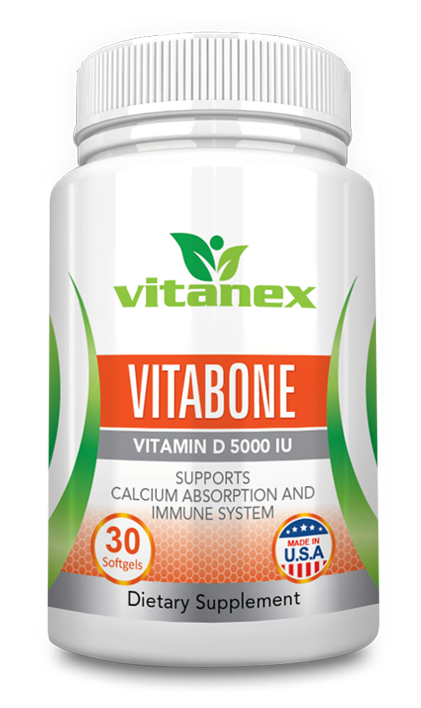Vitamin D3 5000 IU
Help maintain strong healthy bones
Vitamin D is required for the regulation of the minerals calcium and phosphorus found in the body. It also plays an important role in maintaining proper bone structure. Vitamin D is used for preventing and treating rickets, a disease that is caused by not having enough vitamin D (vitamin D deficiency). Vitamin D is also used for treating weak bones (osteoporosis), bone pain (osteomalacia), bone loss in people with a condition called hyperparathyroidism, and an inherited disease (osteogenesis imperfecta) in which the bones are especially brittle and easily broken. It is also used for preventing falls and fractures in people at risk for osteoporosis, and preventing low calcium and bone loss (renal osteodystrophy) in people with kidney failure.
Vitamin D deficiency is more common than you might expect. People who don’t get enough sun are especially at risk. Vitamin D deficiency also occurs even in sunny climates, possibly because people are staying indoors more, covering up when outside, or using sunscreens consistently these days to reduce skin cancer risk.
Older people are also at risk for vitamin D deficiency. They are less likely to spend time in the sun, have fewer “receptors” in their skin that convert sunlight to vitamin D, may not get vitamin D in their diet, may have trouble absorbing vitamin D even if they do get it in their diet, and may have more trouble converting dietary vitamin D to a useful form due to aging kidneys. In fact, the risk for vitamin D deficiency in people over 65 years of age is very high. Surprisingly, as many as 40% of older people even in sunny climates such as South Florida don’t have enough vitamin D in their systems.
Vitamin D supplements may be necessary for older people, people living in northern latitudes, and for dark-skinned people who need extra time in the sun, but don’t get it.
Multiple preparations of vitamin D and its metabolites are available for the treatment of vitamin D deficiency. Vitamin D, rather than its metabolites, is used when possible since the cost is modest. The two commonly available forms of vitamin D supplements are ergocalciferol and cholecalciferol. Some, but not all, studies suggest that cholecalciferol (vitamin D3) increases serum 25-OH-Vitamin D more efficiently than does ergocalciferol (vitamin D2).
It is common clinical practice to treat high risk individuals with serum 25-OH-Vitamin D concentrations < 20 ng/mL with either 50,000 international units (IU) of vitamin D orally once per week or 5000 IU of vitamin D daily for six to eight weeks, followed by the dose needed to maintain the target 25-OH-Vitamin D level, often at least 800 units of vitamin D daily thereafter.




